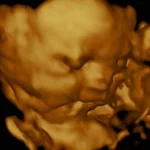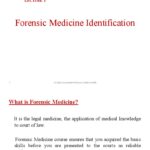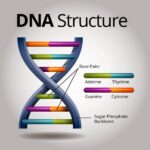Ever wondered how detectives on television shows seem to effortlessly piece together a crime scene? It’s more than just intuition and dramatic pauses. Often, the unsung heroes are forensic examiners, meticulously reconstructing events from fragmented evidence. But what exactly does a forensic examiner do, and what challenges do they encounter in the pursuit of justice? It’s a multifaceted profession demanding scientific acumen, unwavering attention to detail, and a stoic resolve when confronting the darker aspects of human behavior. Let’s delve into the fascinating world of forensic examination.
1. The Keystone: Crime Scene Investigation and Documentation
The initial stage is paramount: securing and meticulously documenting the crime scene. This isn’t merely taking a few snapshots; it’s a systematic process involving detailed photography, videography, and the creation of sketches and diagrams. Think of it as building a virtual time capsule of the scene, preserving its integrity for future analysis. Every item, from a stray fiber to a blood spatter pattern, is cataloged and its position relative to other objects is recorded using precise measurement techniques. This rigorous process ensures that nothing is overlooked and that the context of the evidence remains intact.
2. Evidence Collection and Preservation: A Chain of Custody Imperative
Once documented, the real work begins: evidence collection. Each piece of potential evidence must be carefully collected, packaged, and labeled to maintain its integrity and prevent contamination. This includes employing aseptic techniques where appropriate, ensuring that biological evidence is handled with utmost care. The “chain of custody” is a critical concept here – a documented record of who handled the evidence, when, and where. Any break in this chain can render the evidence inadmissible in court, making meticulous record-keeping absolutely vital. Furthermore, examiners must be adept at utilizing specialized equipment for trace evidence collection, such as vacuum systems with micron filters and electrostatic lifting devices for footwear impressions.
3. Forensic Laboratory Analysis: The Realm of Specialized Disciplines
The evidence, properly secured, then journeys to the forensic laboratory, a hub of specialized disciplines. Here, examiners might specialize in various areas, including:
- DNA Analysis: Extracting, amplifying, and analyzing DNA from biological samples (blood, saliva, hair, etc.) to identify individuals or link them to the crime scene. This involves employing techniques like Polymerase Chain Reaction (PCR) and Short Tandem Repeat (STR) analysis.
- Trace Evidence Analysis: Examining microscopic materials such as fibers, hair, paint chips, and glass fragments to establish potential links between people, objects, or locations. This may involve microscopy, spectroscopy, and chromatography techniques.
- Ballistics Analysis: Analyzing firearms, ammunition, and bullet trajectories to determine the type of weapon used, the distance from which it was fired, and the sequence of events. This requires knowledge of internal and external ballistics.
- Toxicology: Identifying and quantifying drugs, alcohol, and other toxins in biological samples to determine their role in a crime or death. This employs techniques like gas chromatography-mass spectrometry (GC-MS) and liquid chromatography-mass spectrometry (LC-MS).
- Latent Fingerprint Examination: Developing and analyzing latent fingerprints (those invisible to the naked eye) found at the crime scene to identify potential suspects. This involves various chemical and physical development techniques.
Each of these specialties demands extensive training and a deep understanding of scientific principles.
4. Interpretation and Reconstruction: Weaving a Narrative from Fragments
The analysis doesn’t end with identifying a substance or matching a DNA profile. The examiner must then interpret the findings within the context of the crime scene and other evidence. This involves reconstructing the sequence of events, identifying potential motives, and drawing logical conclusions. This process necessitates a high degree of objectivity and an understanding of the limitations of the evidence. For example, the absence of evidence does not necessarily equate to evidence of absence. Examiners must also be cognizant of potential cognitive biases that can influence their interpretations.
5. Expert Testimony: Bridging the Gap Between Science and the Courtroom
Finally, the forensic examiner may be called upon to provide expert testimony in court. This involves presenting their findings in a clear, concise, and understandable manner, explaining the scientific principles behind their analysis, and defending their conclusions against challenges from opposing counsel. This requires not only a deep understanding of the science but also the ability to communicate effectively with a jury and withstand rigorous cross-examination. Examiners must be prepared to explain complex scientific concepts in layman’s terms and to address any potential limitations or uncertainties in their findings. The admissibility of forensic evidence is often hotly contested, placing a significant burden on the examiner to justify their methodology and conclusions.
The Challenges: Beyond the Glamour of Television
The reality of forensic examination is often far removed from the sanitized depictions on television. Examiners face numerous challenges, including:
- Maintaining Objectivity: The pressure to solve a case can be immense, but examiners must remain objective and avoid letting their personal biases influence their analysis.
- Dealing with Graphic Evidence: Crime scenes can be disturbing and emotionally taxing. Examiners must develop coping mechanisms to deal with the psychological impact of their work.
- Resource Constraints: Forensic laboratories are often understaffed and underfunded, limiting their ability to conduct thorough analyses.
- Evolving Technology: Forensic science is constantly evolving, requiring examiners to stay abreast of the latest technological advancements and analytical techniques.
- The “CSI Effect”: Juries often have unrealistic expectations of forensic science, believing that it can solve every crime instantly and definitively. This can make it difficult for examiners to present their findings in a realistic and nuanced manner.
Despite these challenges, forensic examiners play a crucial role in the pursuit of justice, using their scientific expertise to uncover the truth and hold perpetrators accountable. It’s a demanding profession, but one that offers the satisfaction of contributing to a safer society. The ability to meticulously analyze minute details, coupled with an unwavering commitment to objectivity, makes the forensic examiner a cornerstone of the modern justice system.










Leave a Comment